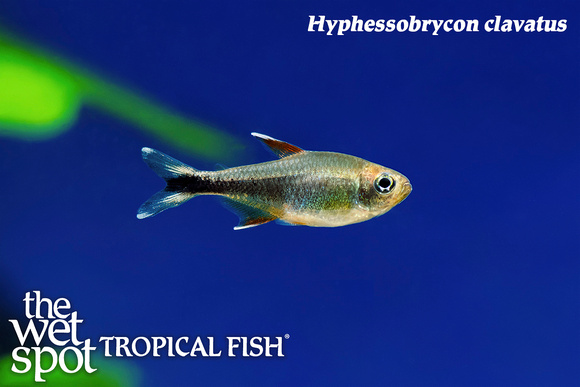Description
Hyphessobrycon clavatus, commonly known as the Acaciensis Tetra, is a popular freshwater aquarium fish. Here’s a summarized bullet point list of care tips for these beautiful fish:
Tank Requirements:
– Tank size: At least 20 gallons for a small group (6-8) of Acaciensis Tetras.
– Filtration: Use a good quality filter to maintain water clarity and stability.
– Water parameters: Temperature 72-79°F (22-26°C), pH 6.0-7.5, hardness 2-10 dGH.
– Substrate: Use soft sand or rounded gravel to mimic their natural environment.
– Plants and hiding spots: Provide plenty of plants and hiding spots with driftwood or rock formations.
Feeding:
– Offer a balanced diet: Provide high-quality flake or pellet food supplemented with occasional live or frozen treats like brine shrimp, bloodworms, and daphnia.
– Feed small portions multiple times a day to prevent overeating and keep water quality in check.
Tankmates:
– Acaciensis Tetras are peaceful and can be kept with other small, non-aggressive fish of similar size.
– Avoid keeping them with aggressive or fin-nipping species.
Water Maintenance:
– Perform regular water changes (20-25% weekly) to maintain water quality and remove accumulated waste.
– Use a gravel vacuum during water changes to clean the substrate and remove debris.
Behavior:
– Acaciensis Tetras are schooling fish, so keep them in groups of at least 6-8 to reduce stress and improve their behavior.
– They are peaceful and generally non-aggressive, but keep an eye on their interactions with tankmates.
Healthcare:
– Monitor water parameters regularly using test kits to ensure optimal conditions.
– Quarantine new fish before introducing them to the main tank to prevent disease transmission.
– Observe for any signs of illness (changes in behavior, loss of appetite, etc.) and address them promptly.
Breeding:
– Breeding Acaciensis Tetras in a home aquarium can be challenging.
– Provide a separate breeding tank with fine-leaved plants for the adults to lay eggs on.
– Remove adult fish after spawning to prevent them from eating the eggs.
Observation and Enjoyment:
– Spend time observing your Acaciensis Tetras to understand their behavior and health.
– Provide a peaceful environment for them to showcase their natural beauty and coloration.
Remember that proper care and attention are crucial for maintaining the health and happiness of your Acaciensis Tetras. By following these guidelines, you can create a beautiful and thriving aquarium for these lovely fish.

